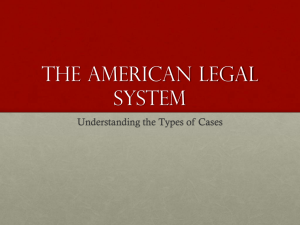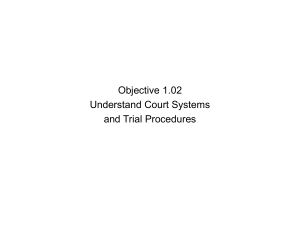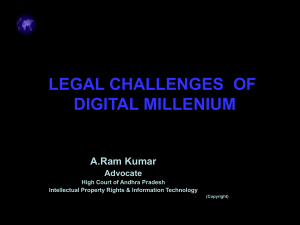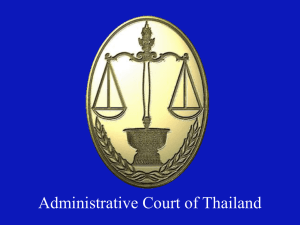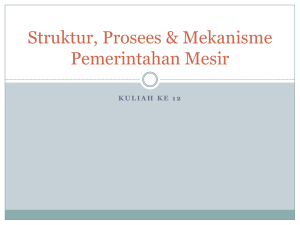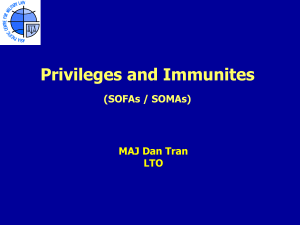FDNLaw4e_slides_ch03 - Tilde Publishing and Distribution
advertisement
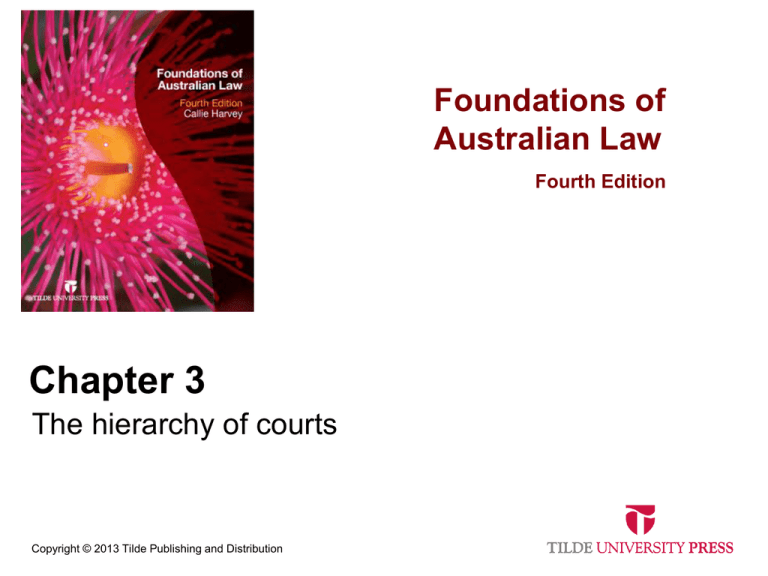
Foundations of Australian Law Fourth Edition Chapter 3 The hierarchy of courts Copyright © 2013 Tilde Publishing and Distribution Chapter overview This chapter looks at the concepts of Court hierarchy Types of jurisdiction Hierarchy and jurisdiction of courts at both federal and state/territory levels Strengths and weaknesses of courts Alternative dispute resolution bodies and methods The court hierarchy • Where disputes between two parties are tried and resolved • Ranked in a hierarchy that positions each court either above or below the other courts The need for hierarchy • Operation of the doctrine of precedent • Specialisation • Appeals system Types of jurisdiction • • • • Original jurisdiction Appellate jurisdiction Criminal Jurisdiction Civil Jurisdiction Original jurisdiction courts • Each court in the hierarchy with original jurisdiction has power to decide upon a matter for the first time • Often called courts of first instance Appellate jurisdiction • Gives courts the authority to review cases a second or third time on appeal • The party who initiates an appeal is referred to as the appellant and the opposing party as the respondent • Higher courts can reconsider the decisions of lower courts • Only court without an appellate jurisdiction is Magistrates’ Court Criminal jurisdiction • Gives power to some courts to hear cases that are of a criminal nature • Courts hear summary and indictable offences relative to the ranking of their particular court within the hierarchy Civil jurisdiction • Gives power to courts to hear cases which are breaches of areas of civil law such as tort, i.e. a civil wrong, and contract • Each court has a civil jurisdiction that specifies the range of damages that that particular court has the power to reward The Commonwealth hierarchy of Australian courts • The High Court of Australia Original jurisdiction Appellate jurisdiction • The Federal Court of Australia Original jurisdiction Appellate jurisdiction • The Family Court of Australia Original jurisdiction Appellate jurisdiction ... • The Federal Magistrates Court Original jurisdiction • Concurrent jurisdiction with Family Court • Concurrent jurisdiction with the Federal Court Appellate jurisdiction The hierarchy of Australian state and territory courts • State and territory Magistrates’ Courts Criminal jurisdiction Civil jurisdiction • District Courts Criminal jurisdiction Civil jurisdiction Appellate jurisdiction ... • Supreme courts Criminal jurisdiction Civil jurisdiction Appellate jurisdiction • Courts of Appeal • Other state courts Cross vesting • Allows a court action to be brought in one court • Applied in situations where a civil case involves more than one jurisdiction Strengths of court system • • • • • Trials Doctrine of precedent Community involvement Specialisation and expertise Appeals Weaknesses of court system • • • • • Costs Delays due to appeals Unelected judges Binding precedents Rigid procedures Alternative dispute resolution bodies • Federal commissions The Australian Industrial Relations Commission The Australian Competition and Consumer Commission Australian Securities and Investment Commission (ASIC) - Corporate Regulator - Markets Regulator - Financial Services Regulator ... • Federal tribunals The Australian Competition Tribunal The Administrative Appeals Tribunal • State commissions and tribunals Industrial relations commissions Small claims tribunals Alternative dispute resolution methods • • • • Arbitration Mediation Conciliation Ombudsman Legal regulatory bodies • Each state and territory has a variety of legal regulatory bodies independent government Professional associations • See Table 3.6, 3.7, 3.8 Chapter review In this chapter you have looked at Court hierarchy Types of jurisdiction Hierarchy and jurisdiction of courts at both federal and state/territory levels Strengths and weaknesses of courts Alternative dispute resolution bodies and methods

